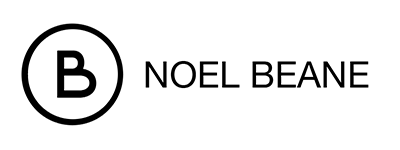Leadership: Design Leadership
The Art of Evaluating Talent and Growing Designers: A Design Leader’s Superpower
One of the most underrated yet absolutely essential skills for a design leader is the ability to evaluate talent and foster professional growth. If you’re serious about building a world-class design team, this isn’t just a “nice-to-have” skill—it’s your secret weapon. And here’s the kicker: it’s just as critical as nailing the perfect user experience, crafting a killer design strategy, or presenting your vision to the C-suite.
Why? Because even the most visionary leaders are nothing without a strong team. You can have all the ideas in the world, but if you don’t have the right people to execute them, you’re stuck in the land of “what could’ve been.” On the flip side, when you know how to spot potential, nurture it, and create an environment where designers thrive, you unlock a level of impact that goes far beyond your own individual contributions.
The Talent Evaluation Mindset
Evaluating talent isn’t just about scanning a resume or admiring a slick portfolio. It’s about digging deeper. Sure, technical skills and aesthetic sensibilities are important, but in a customer-focused, results-oriented environment, you need more than pixel perfection. You need designers who can think strategically, empathize with users, and collaborate seamlessly with cross-functional teams.
When evaluating talent, ask yourself:
- Can this person balance creativity with practicality?
- Do they demonstrate curiosity and a hunger to grow?
- How do they respond to feedback?
- Are they adaptable enough to thrive in ambiguity?
These are the qualities that separate good designers from great ones. And as a leader, it’s your job to identify these traits—not just in seasoned professionals but also in emerging talent that might need some guidance to shine.
Fostering Professional Growth
Once you’ve got the right people on board, the real work begins. Designers are like plants (stick with me here). Some are cacti—low maintenance and self-sufficient. Others are orchids—delicate and needing careful attention. Your job is to figure out what each designer needs to grow and then provide it.
This means creating opportunities for them to stretch themselves. Give them challenging projects that push their limits but also offer support so they don’t feel like they’re drowning. Encourage them to take ownership of their work and celebrate their wins—big or small. And don’t shy away from constructive feedback; it’s one of the best gifts you can give as a leader (when delivered thoughtfully, of course).
Professional growth doesn’t stop at skills development—it’s also about helping designers find their voice and build confidence in their decision-making. A designer who trusts their instincts and feels empowered to advocate for users is worth their weight in gold.
Why This Skill Is on Par with Other Leadership Essentials
Now, let’s put this into perspective. As a design leader, you’re expected to juggle a lot: aligning design with business goals, championing user needs, driving innovation, and keeping the team motivated. Knowing how to evaluate talent and foster growth ties directly into all of these responsibilities.
Think about it:
- Aligning design with business goals: A team of well-rounded, strategic thinkers will naturally create work that drives results.
- Championing user needs: Designers who feel supported and valued are more likely to bring their A-game to solving user problems.
- Driving innovation: Growth-oriented designers are constantly experimenting and pushing boundaries.
- Keeping the team motivated: When people see that you’re invested in their success, they’re more likely to stay engaged and committed.
In short, this isn’t just a “soft skill” or something you squeeze into your 1:1s when there’s time. It’s foundational to everything else you do as a leader.
Key Take Aways
Being a design leader isn’t just about delivering great work; it’s about building a great team that delivers great work. And that starts with knowing how to evaluate talent and nurture professional growth. It’s not always easy—it takes time, effort, and a lot of intentionality—but trust me, it’s worth it.
When you invest in your designers, you’re not just shaping individual careers; you’re creating a ripple effect that elevates your team, your company, and ultimately, the experiences you deliver to your customers. And isn’t that what great design leadership is all about?
Tagline
Acquisition
value
desc
Engagement
value
desc
Conversion
value
desc

